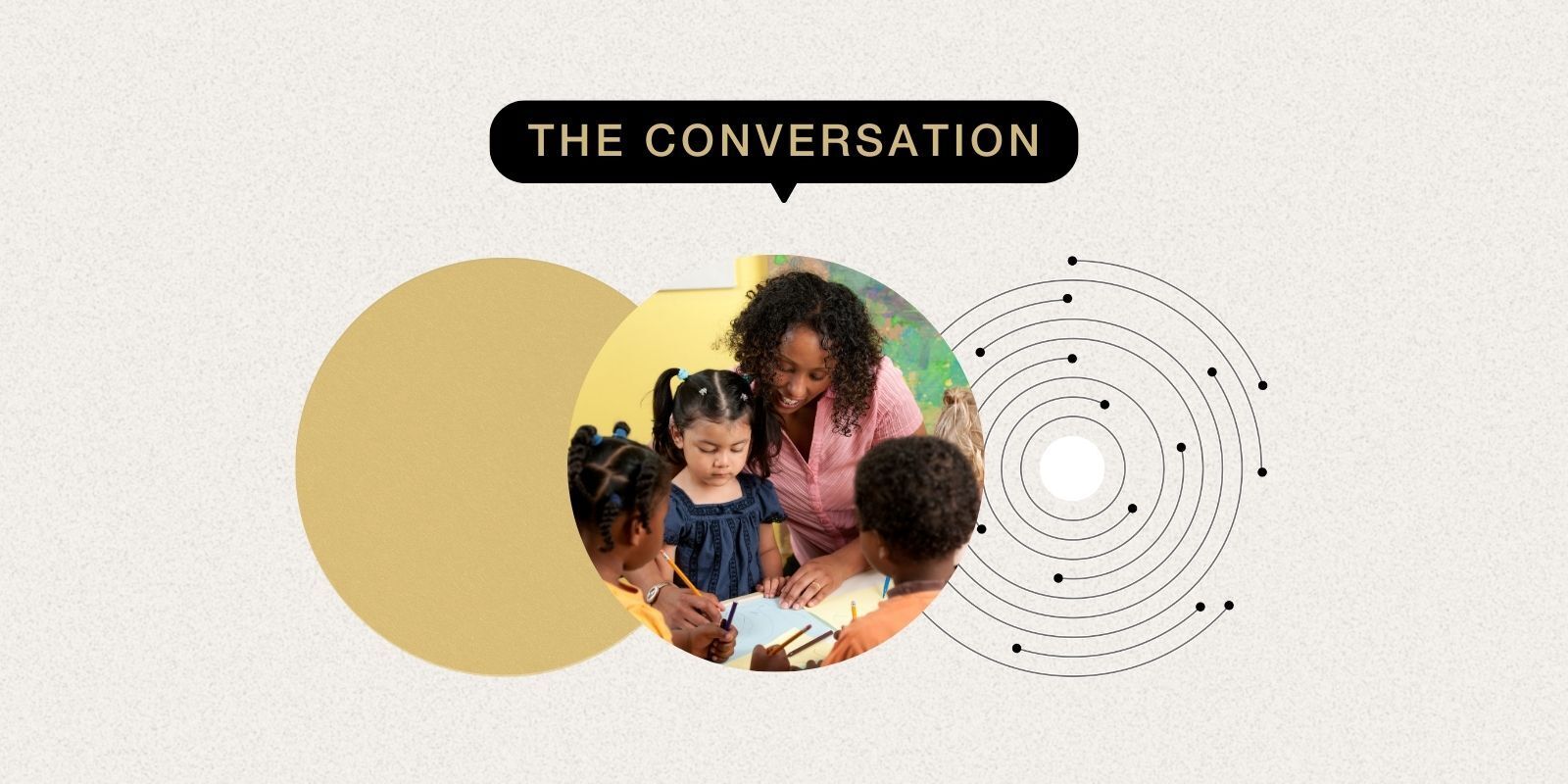Michigan reports record enrollment in the state’s free preschool program, but openings are aplenty – Chalkbeat

Report on Michigan’s Universal Preschool Initiative and its Alignment with Sustainable Development Goals
Executive Summary
This report analyzes the expansion of Michigan’s free preschool program, the Great Start Readiness Program (GSRP), under the “PreK for All” initiative. It assesses the program’s record enrollment, its socioeconomic impact, and its significant contributions to achieving key United Nations Sustainable Development Goals (SDGs), particularly SDG 4 (Quality Education), SDG 1 (No Poverty), and SDG 10 (Reduced Inequalities). While enrollment has reached a historic high of 51,000 children, a considerable number of vacancies remain, indicating a need for enhanced public awareness campaigns.
Program Expansion and Contribution to SDG 4: Quality Education
The “PreK for All” Initiative
Michigan has undertaken a significant expansion of its GSRP through the “PreK for All” initiative, a bipartisan effort to provide universal access to early childhood education. This initiative directly addresses SDG Target 4.2, which aims to ensure that all children have access to quality early childhood development, care, and pre-primary education so they are ready for primary education. By removing income-based eligibility restrictions, the state is creating an inclusive and equitable educational foundation for all four-year-old children, aiming to “ensure children arrive at kindergarten ready to learn.”
Enrollment Data and Educational Impact
- Record Enrollment: A total of 51,000 children are enrolled for the current year, an increase of 8,900 from the previous year.
- Historical Growth: Enrollment has risen substantially from 36,466 children during the 2023-24 school year, prior to the full implementation of the universal expansion.
- Long-Term Educational Outcomes: Officials emphasize that high-quality pre-K programs are linked to higher rates of high school graduation, college attendance, and career training, fostering lifelong learning opportunities as outlined in SDG 4.
- Skill Development: The program focuses on teaching critical social and cognitive skills, including collaboration, sharing, and problem-solving, which are foundational for future academic and personal success.
Socioeconomic Impact and Broader SDG Contributions
Advancing SDG 1 (No Poverty) and SDG 10 (Reduced Inequalities)
The universal nature of the program is a powerful tool for reducing economic and social disparities.
- Poverty Reduction: By providing free preschool, the state offers families an estimated annual savings of $14,000. This financial relief directly supports SDG 1 by alleviating economic burdens on households, especially during periods of rising costs.
- Reducing Inequality: The elimination of income restrictions ensures that access to high-quality early education is not determined by a family’s socioeconomic status. This policy is a direct contribution to SDG 10, promoting social and economic inclusion and reducing inequalities of opportunity from the earliest stages of a child’s life.
Fostering SDG 8: Decent Work and Economic Growth
Investment in early childhood education is a long-term strategy for sustainable economic development.
- Human Capital Development: The program is an investment in Michigan’s future workforce. Children who participate are better equipped for primary and secondary education, leading to a more skilled and capable workforce in the future.
- Parental Workforce Participation: Free and accessible preschool enables parents, particularly women, to enter or remain in the workforce, contributing to household income and overall economic growth, aligning with the principles of SDG 8.
Challenges and Strategic Recommendations
Addressing Awareness and Enrollment Gaps
Despite record enrollment, a significant number of available slots in preschool programs across the state remain unfilled. This suggests a critical gap in public awareness, preventing many eligible families from taking advantage of this transformative opportunity. Continued outreach is essential to maximize the program’s impact and ensure its benefits reach every community.
Recommendations for Action
- Launch a Statewide Awareness Campaign: Implement a comprehensive, multi-lingual public information campaign utilizing digital media, community partnerships, and public service announcements to inform all families about the availability and benefits of free preschool.
- Sustain Bipartisan Financial Commitment: Ensure continued legislative and budgetary support to maintain the program’s universality and high-quality standards for the long term.
- Strengthen Community Outreach: Partner with local organizations, healthcare providers, and school districts to directly engage with families and assist them with the enrollment process, which can be found on Michigan’s PreK for All website.
Conclusion
Michigan’s “PreK for All” initiative serves as a powerful model for leveraging educational policy to achieve multiple Sustainable Development Goals. By providing universal, high-quality preschool, the state is not only investing in the educational future of its children (SDG 4) but is also actively working to reduce poverty (SDG 1), diminish inequality (SDG 10), and build a foundation for future economic prosperity (SDG 8). Addressing the current awareness gap through strategic outreach will be crucial to fully realizing the program’s potential to create a more equitable and sustainable future for all residents of Michigan.
Analysis of Sustainable Development Goals in the Article
1. Which SDGs are addressed or connected to the issues highlighted in the article?
The article on Michigan’s free preschool program primarily addresses three Sustainable Development Goals (SDGs):
- SDG 4: Quality Education – The core focus of the article is on expanding access to pre-primary education through the “PreK for All” initiative to ensure children are prepared for primary schooling.
- SDG 10: Reduced Inequalities – The program explicitly aims to reduce inequality by making preschool available to “all children regardless of income,” removing financial barriers that previously restricted access for many families.
- SDG 1: No Poverty – By providing free preschool, the program alleviates a significant financial burden on families, which directly contributes to poverty reduction. The article notes that families can save an estimated $14,000 annually.
2. What specific targets under those SDGs can be identified based on the article’s content?
Based on the article’s discussion of Michigan’s “PreK for All” initiative, the following specific SDG targets can be identified:
- Target 4.2: By 2030, ensure that all girls and boys have access to quality early childhood development, care and pre-primary education so that they are ready for primary education.
- Explanation: The article’s central theme is the expansion of the Great Start Readiness Program to provide universal access to preschool. The stated goal, as mentioned by Governor Gretchen Whitmer, is to “ensure children arrive at kindergarten ready to learn,” which directly aligns with the objective of Target 4.2.
- Target 10.2: By 2030, empower and promote the social, economic and political inclusion of all, irrespective of age, sex, disability, race, ethnicity, origin, religion or economic or other status.
- Explanation: The article highlights that the initiative is “making it available for all children regardless of income” and has been “aimed at removing income and other restrictions.” This policy of universal access directly addresses the goal of promoting social and economic inclusion by ensuring a child’s economic status does not determine their access to early education.
- Target 1.3: Implement nationally appropriate social protection systems and measures for all, including floors, and by 2030 achieve substantial coverage of the poor and the vulnerable.
- Explanation: Michigan’s free preschool program acts as a state-level social protection system. By offering this service for free, it provides a significant financial benefit to families, particularly those who are poor and vulnerable. The article quantifies this benefit, stating that families “save an estimated $14,000 each year,” which helps protect them from financial hardship.
3. Are there any indicators mentioned or implied in the article that can be used to measure progress towards the identified targets?
Yes, the article mentions or implies several indicators that can be used to measure progress:
- Indicator for Target 4.2: Participation rate in organized learning (one year before the official primary entry age).
- Evidence from the article: The article provides concrete enrollment numbers. It states that “51,000 children are enrolled in the Great Start Readiness Program,” which is a significant “increase of 8,900 over last year” when 36,466 children were enrolled. These enrollment figures serve as a direct indicator of participation in pre-primary education.
- Indicator for Target 1.3: Proportion of population covered by social protection floors/systems.
- Evidence from the article: While not a formal UN indicator, a practical measure of the program’s impact is the financial relief provided. The article states that “families who enroll their children in PreK for All programs save an estimated $14,000 each year.” This figure serves as a powerful indicator of the economic benefit and social protection provided by the program.
- Indicator for Target 10.2: Proportion of people living below 50 per cent of median income.
- Evidence from the article: The article implies progress by stating the program is now available “regardless of income.” The sharp increase in enrollment from 36,466 to 51,000 after the removal of income restrictions suggests that the program is successfully reaching a broader economic cross-section of the population, thereby promoting inclusion and reducing inequality in access to education.
4. Table of SDGs, Targets, and Indicators
| SDGs | Targets | Indicators Identified in the Article |
|---|---|---|
| SDG 4: Quality Education | Target 4.2: Ensure all children have access to quality early childhood development, care, and pre-primary education. | The number of children enrolled in the Great Start Readiness Program (currently 51,000, up from 36,466). |
| SDG 10: Reduced Inequalities | Target 10.2: Promote the social and economic inclusion of all, irrespective of economic or other status. | The removal of income restrictions for program eligibility, making it available to all children regardless of their family’s financial situation. |
| SDG 1: No Poverty | Target 1.3: Implement nationally appropriate social protection systems. | The estimated annual savings for families ($14,000), which acts as a financial social protection measure. |
Source: chalkbeat.org
What is Your Reaction?
 Like
0
Like
0
 Dislike
0
Dislike
0
 Love
0
Love
0
 Funny
0
Funny
0
 Angry
0
Angry
0
 Sad
0
Sad
0
 Wow
0
Wow
0
















































:focal(1500,1000)/https://media.globalcitizen.org/a6/9a/a69a4720-d8a1-4715-b596-18738d03c05c/rotary_polio_hero_image.jpg?#)







/countries/sri-lanka/photo-credit---dmc-sri-lanka.tmb-1200v.jpg?sfvrsn=dc298bcc_1#)


















